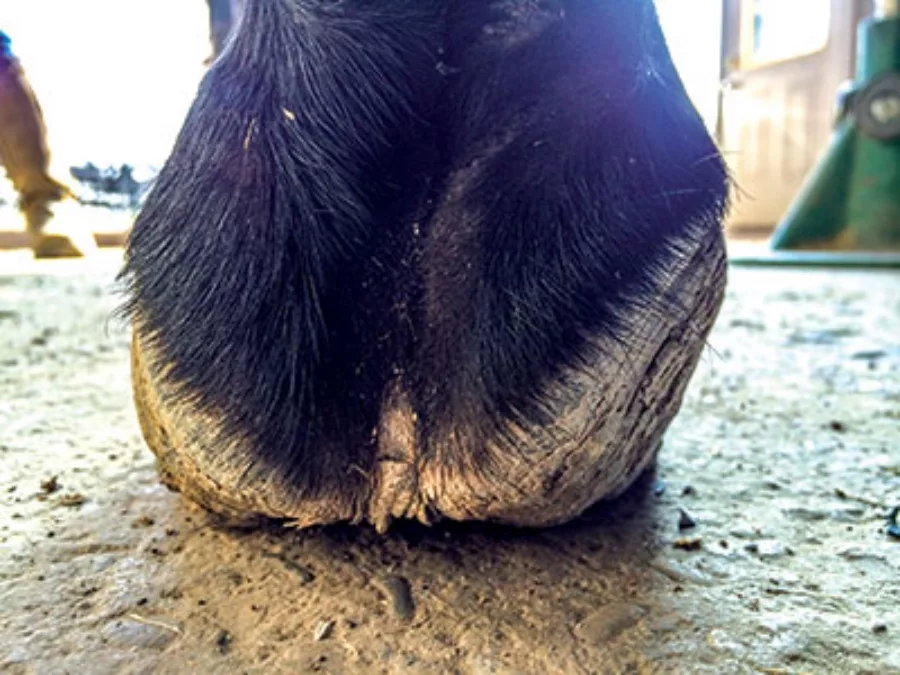American Farriers Journal
American Farriers Journal is the “hands-on” magazine for professional farriers, equine veterinarians and horse care product and service buyers.

Working in tandem, pressure and time can wreak a lot of havoc.
In geology, over time pressure turns sediment to rock, coal to diamond and can create mountains. Pressure in relation to the equine foot can create mountains, too — mountains of problems. One of those problems can be corrected quite nicely, particularly if caught early.
Sheared heels generally occur when one heel is elevated above the level of the other by a significant amount.
“The difference could be 5 millimeters or more,” explains Ernest Woodward, a farrier and partner at Southern California Equine Podiatry Center in Rancho Santa Fe, Calif. “You will often note that the affected wall is more upright, sometimes actually diving under and collapsing.”
The causes are many, but most result from conformation issues, improper trimming or uneven weight bearing because of pain in one heel.
“Barring some pathological condition or a big, barbed wire scar from when it was in the foal pasture, by-and-large the heels are over pressured,” Woodward says. “We’ve all seen those and they don’t qualify as your normal sheared heel.”
Conformation. Remington Leach, a certified journeyman farrier who joined Rood & Riddle Equine Hospital in January, says he tends to see sheared heels more often with horses that are toed-in.
“According to a study done at Rood & Riddle Equine Hospital, 95% of the horses studied that had a sheared heel on the medial side also had inward rotation of the distal limb,” he says. “Of the 5%…